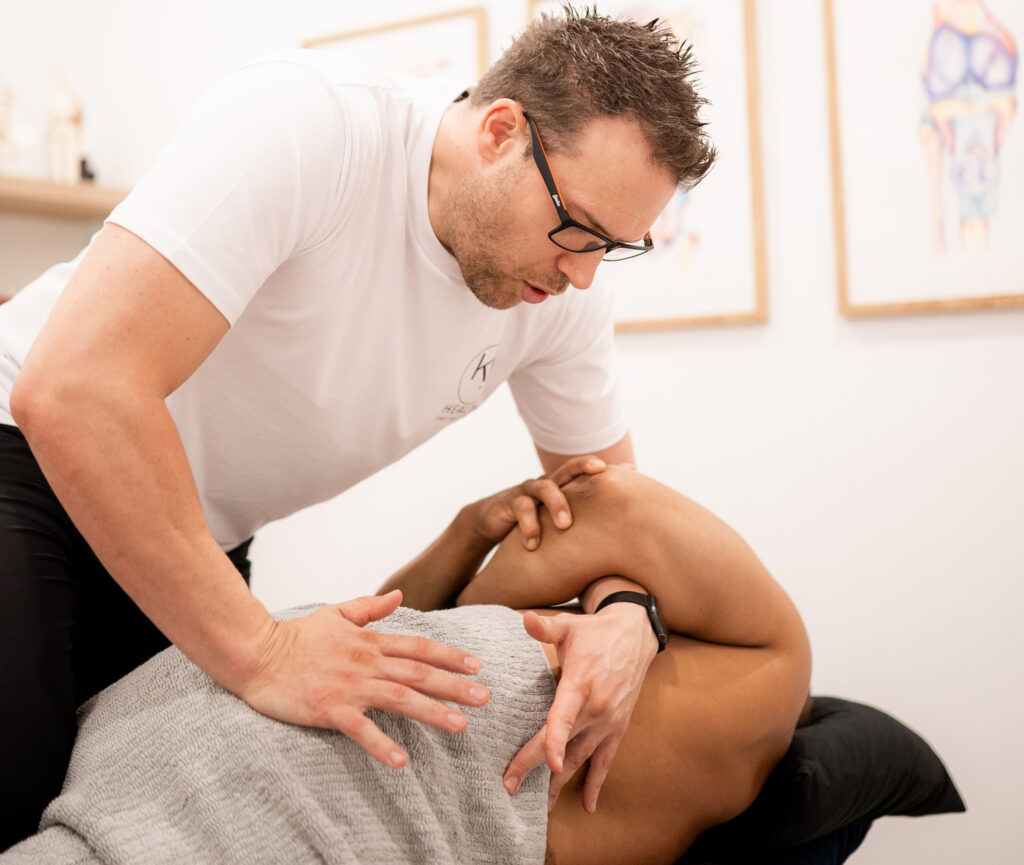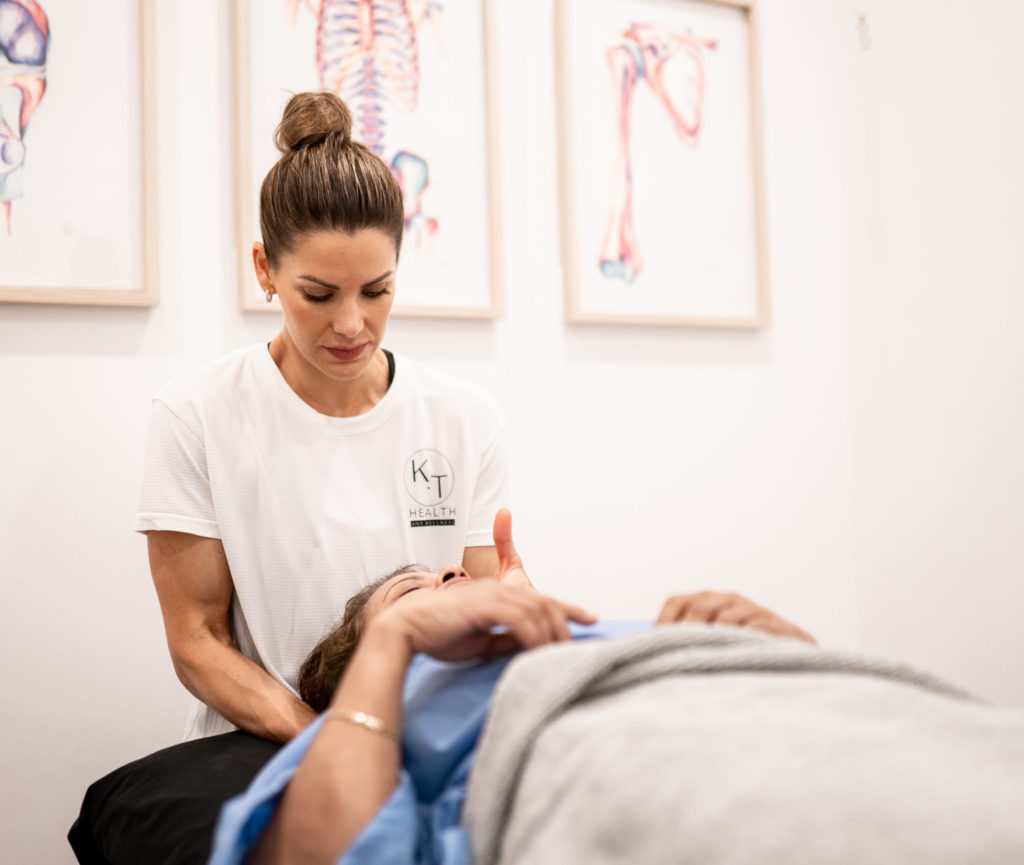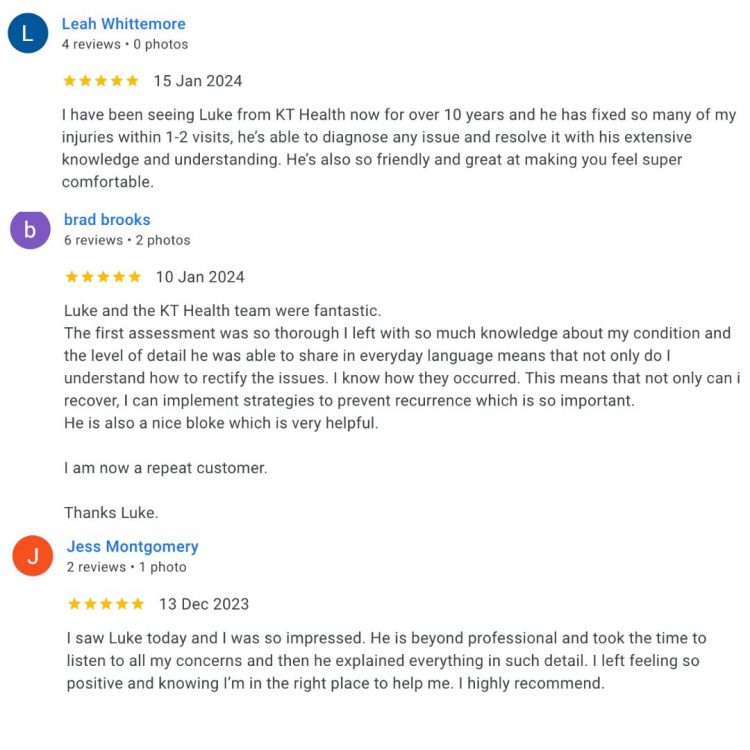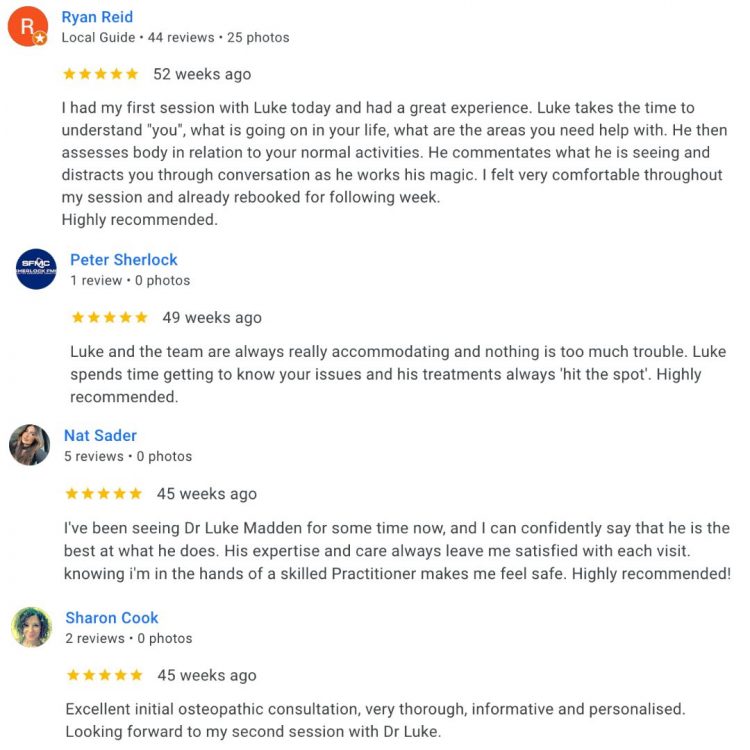Everything You Need to Know About a Biceps Tendon Rupture
What is a Biceps Tendon Rupture?
A biceps tendon rupture is when one of the tendons connecting the biceps muscle to the bone tears, either partially or completely. It most commonly happens in the long head of the biceps, which runs from the shoulder joint down the front of the arm. In some cases, the distal biceps tendon (near the elbow) can also rupture. This kind of injury usually leads to sudden pain, weakness, and a noticeable change in the shape of the arm.
An analogy…
Think of the biceps tendon like a rope holding a heavy object. If the rope snaps under too much tension, the object drops, and the rope recoils. The same happens to the tendon, once it tears, the biceps muscle can retract or bunch up, creating what’s often called a “Popeye” arm deformity.
What are other names that a biceps tendon rupture can be referred to?
Biceps Rupture, Ruptured Biceps
What causes a biceps tendon rupture?
The long head of the biceps tendon runs through a groove in the upper arm and connects deep into the shoulder. Over time, the tendon can weaken due to wear and tear, repetitive overhead use, or inflammation from tendonitis. A rupture typically happens when a sudden or heavy load is applied, especially during activities like lifting, catching a heavy object, or resisting a strong pull. The distal biceps tendon near the elbow can also rupture with a sudden force, often during heavy lifting.
What are the signs and symptoms of a biceps tendon rupture?
- Sudden, sharp pain in the upper arm or at the front of the shoulder
- “Popping” sound or sensation at the time of injury
- Visible bulge or deformity in the biceps muscle
- Bruising and swelling in the upper arm or forearm
- Weakness in lifting, especially with bending the elbow or turning the palm upward
- Pain or tenderness near the bicipital groove or elbow
What tests are used to diagnose a biceps tendon rupture?
Hook Test: The patient bends their elbow to 90 degrees and turns their palm up. The practitioner tries to “hook” a finger under the biceps tendon from the side of the elbow. If the tendon is not present or can’t be hooked, the test is positive, suggesting a distal biceps tendon rupture.
Biceps Squeeze Test: The patient rests their arm slightly bent, palm up. The practitioner squeezes the middle of the biceps muscle. If the forearm doesn’t move or rotate outward (supinate), the test is positive, indicating a possible distal biceps rupture.
How long does a biceps tendon rupture take to heal?
Recovery from a biceps tendon rupture depends on the location and severity of the tear. Often for long head ruptures, most people regain functional use of the arm within 6 to 12 weeks, although some strength loss may remain.
How does a biceps tendon rupture happen?
- Heavy or sudden lifting
- Chronic biceps tendonitis or rotator cuff problems
- Repetitive overhead movement
- Use of corticosteroids or smoking, which can weaken tendons
- Poor shoulder mechanics or previous shoulder injuries
What treatment can help a biceps tendon rupture?
- Ice and anti-inflammatory medications for pain
- Manual therapy to manage muscle tightness and improve function
- Rehabilitation exercises to strengthen the shoulder and surrounding muscles
- Education on safe lifting techniques and movement modification
What exercises or stretches can I do for a biceps tendon rupture?
- Range of motion exercises
- Isometric biceps and shoulder activation
- Scapular stability and postural drills
- Progressive strengthening using bands or light weights
- Functional lifting and grip strength work in later stages
What products can help with a biceps tendon rupture?
Side lying shoulder external rotation in neutral
Lie down on your unaffected side.
Place your symptomatic arm down along the side of your body.
Bend your elbow to a right angle and rotate your forearm up and down, maintaining contact between your upper arm and the side of your body.

Resisted shoulder internal rotation
Stand upright and tie a resistance band to a solid object beside you.
Hold the other end in your affected hand with some tension in the band.
Bend your affected elbow to a right angle.
Keep your shoulder blades back and down, and rotate the arm inwards, keeping your elbow loosely by your side and your shoulder blades in a good position.
Control the movement back to the start position.

Shoulder flexion (active)
Stand up straight with your arms straight by your side.
Slowly lift your arms forwards in front of you, then up as high as you can.
Ensure you do not lean your body, or hunch your shoulder.
Control the movement as you slowly lower your arms back down.

STOP GUESSING – START MOVING
See what other people have said about our osteopaths
Trustindex verifies that the original source of the review is Google. KT health has really helped my back and i have been able to get back into competitive sportTrustindex verifies that the original source of the review is Google. Absolutely amazing, I see Louie Nouh who always listens and caters to my needs. He is amazing at his job and always helps alleviate my pain. I highly recommend Louie.Trustindex verifies that the original source of the review is Google. Friendly, supportive staff. Such a lovely place to exercise! Highly recommend.Trustindex verifies that the original source of the review is Google. Amazing instructor, I am new to Pilates felt very comfortable & supported.Trustindex verifies that the original source of the review is Google. I have been suffering from shoulder and neck pain for months - I saw Dr Louie Nouh a couple of time. His treatment really relived the pain. I have full range of movement now. His knowledge on exercise is fantastic.Trustindex verifies that the original source of the review is Google. Absolutely love reformer at menai. Instructors are amazing. Love Michaela and love the small classes. Highly recommend!Trustindex verifies that the original source of the review is Google. The trainers are all amazing , they explain everthing step by step and help where needed . It is an amazing place to relax get to know other people have a laugh . I recommend for anyone .Trustindex verifies that the original source of the review is Google. Ever since I came here I’ve been looked after by Louie and my shoulder is already feeling much better. Highly Recommend these are good people.Trustindex verifies that the original source of the review is Google. SENSATIONAL Chiropractor in Menai! I attended my first appointment with Dr Louis Nouh at KT Health & Wellness who is an absolute genius even after one session with him. He explained everything he intended to address about my lower back condition, all in easy to understand, layman’s terms. He said he would call me the next day to follow and see how I was feeling after our session and guess what, he did! During our session, he made me feel relaxed and comfortable especially as it was my first chiropractic appointment EVER! For some reason, I am actually looking forward to my subsequent sessions with him next week. Don’t get me wrong, he did poke, prod and crack me as necessary but the results made it seem worth it.Trustindex verifies that the original source of the review is Google. I have been seeing Melinda now for a couple of months to help with bursitis in my hip. She is one of the best practitioners I’ve ever seen.. With the use of various tools and techniques she has helped me recover much quicker than I expected. Thanks Mel and see you tomorrow!
We don't offer magic fixes or cures, but a sustainable approach to back pain.
Our Osteopaths will offer you a road map to help you take control of your back pain and feel great again.
BOOK YOUR OSTEOPATH VISIT TODAY
Book a Time with Dr Luke Madden Below
Book a Time with Dr Melinda Madden Below
Already have an account?
Book as a guest
- Book an Appointment






